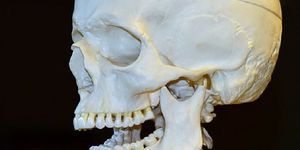Disc Disease Affects One-Third of Older Adults
Between cognitive issues, decreased physical fitness levels and the regular aches and pains of aging, getting older, while still better than the alternative, can be a rocky road. A recent research study on degenerative disc disease found that 1/3 of people aged 40-59 have moderate to severe disc disease.
The study used CT images to track the bone health and disc size of 1200 adults who are part of the Framingham Study, a cohort of residents in the Metro West area of Boston, MA, along with their children and grandchildren, that has been part of medical research since the 1940's. The study, published in the journal Spine Health, was a sobering look at a condition that can severely limit mobility.
Degenerative disc disease can happen as a result of the normal aging process, or from trauma or illness. Discs, which are made of cartilage, keep the vertebrae separate from each other. Over time, the water content in the soft tissue of the cartilage decreases. This makes the discs harder, and more brittle and less able to cushion the bones of the spine. Essentially, discs are the shock absorbers of the spine, so when running or jumping, the discs need to be at full thickness. When the water dries up, the discs can narrow, and there is less absorption of the shock from high impact activity. While it's called a disease, degenerative disc disease is a condition. It can be excruciating and often results in patients severely limiting their physical exercise.
The research was conducted by scientists from Hebrew SeniorLife's Institute for Aging Research and Boston Medical Center. In addition to their findings that 1/3 of people 40-59 have disc issues the study also noted that more than half of the same age group have moderate to severe spinal osteoarthritis. In the age groups of those patients between 60-69 and 20-89, there was a 2 to 4 fold increase in the prevalence of disc narrowing and joint osteoarthritis. Concerning gender, women were 40-70% more likely to develop disc disease or osteoarthritis than men.
So how did they diagnose degenerative disc disease in these patients? CT scans taken six years apart allowed investigators to see disc changes in patients and track them. Elizabeth Samelson, Ph.D., Associate Scientist at the Institute for Aging Research and author of this study said, "Spinal degenerative conditions, including disc height narrowing and joint osteoarthritis, are common causes of pain, reduced function, and health care costs in older adults. Despite the clinical importance, little is known about the frequency and progression of spinal degenerative disease in the general population. Therefore, we conducted a study to describe the prevalence and progression in a population-based cohort." Clearly, disc degeneration and arthritis are problems that should be expected in many older adults. The study was an efficient way for patients to be made aware of the issue and to take proactive measures to stay healthy and fit. The video below has additional information about disc disease and symptoms, check it out.
Sources: The Spine Journal, Hebrew SeniorLife Medtronic









